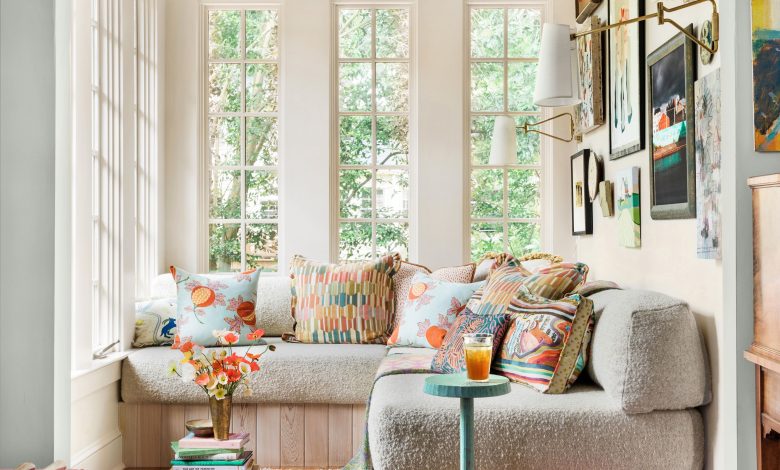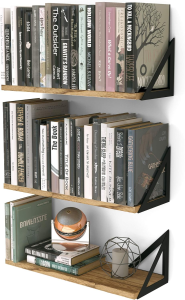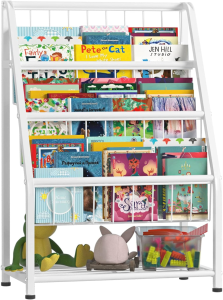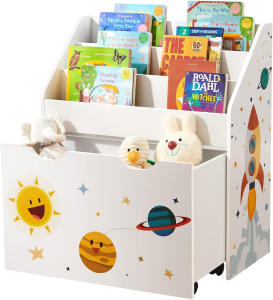Best Kids Bookshelf: Styling Tips for Young Readers!

A kids bookshelf serves as a dedicated space where children’s literature is carefully stored and organized. Its primary purpose is to promote accessibility, ensuring that children have easy access to a variety of books. Moreover, a well-organized bookshelf fosters a deep affection for reading, as it allows children to develop a sense of ownership over their books and encourages them to explore different stories and genres. By providing a curated collection of literature, a kids bookshelf plays a vital role in nurturing a lifelong love for reading among young readers.
Ensuring young readers can find their favorite tales and explore new adventures, a well-organized kids bookshelf is essential in a child’s room or play area. It keeps storybooks within easy reach, promoting regular reading habits and sparking imagination. A bookshelf designed for kids is typically crafted to be sturdy and at an appropriate height, allowing children to select and return books independently.
This independence not only supports their literacy development but also helps in teaching organization skills. By displaying an array of colorful spines, children are naturally drawn to the magic held within the pages, making the bookshelf a cornerstone of learning and creativity. Whether it’s a simple wall-mounted ledge or a thematic freestanding case, a bookshelf for kids is a vital tool in nurturing a lifelong love for reading.
Understanding the Needs of Young Readers
Understanding the needs of young readers is crucial when selecting the perfect bookshelf. It’s not just about storing books; it’s about creating an inviting space that encourages a love for reading.
Young readers often look for bookshelves that are visually appealing and accessible. Bright colors, fun designs, or themes from their favorite stories can draw their interest. The bookshelf should be at a height that is easy for them to reach, allowing them to independently choose their books. This fosters a sense of autonomy and excitement about reading.
Moreover, the role of bookshelves in nurturing a love for reading extends beyond mere storage. A well-organized and attractive bookshelf can make the selection process enjoyable, turning reading into a delightful adventure. It can also help children categorize and appreciate the variety of books they have, from storybooks and picture books to educational material.
In essence, a bookshelf for young readers should be a gateway to the magical world of books, inviting them to explore, learn, and imagine.
Key Features of the Kids Bookshelves
When selecting bookshelves for kids, several key features are essential to consider, ensuring that the bookshelf is not only functional but also safe and suitable for children:
- Durability and Safety Considerations: The best kids bookshelves are built to withstand the wear and tear of daily use. They should be made of sturdy materials and have a stable design to prevent tipping. Rounded corners and non-toxic finishes are important for added safety.
- Size and Accessibility for Children: The height of the bookshelf should be appropriate for the child’s age and height, allowing easy access to their books. Lower shelves are ideal for younger children, enabling them to reach and pick out books independently.
- Storage Capacity and Adaptability: As children grow, so does their book collection. Bookshelves with adjustable shelves or modular designs can adapt to changing storage needs. Ample space for a variety of book sizes, as well as compartments or bins for other reading materials and accessories, are beneficial.
These features collectively ensure that the bookshelf not only serves its purpose of organizing books but also grows with the child, supports their independence, and maintains a safe environment for their reading adventures.
Popular Styles of Kids Bookshelves
Kids bookshelves come in various styles, each offering unique benefits and considerations:
Wall-Mounted Bookshelves
Wall-mounted bookshelves are affixed directly to the wall, offering a space-saving solution that creates a sleek, floating appearance. This style is particularly effective in maximizing room space while providing a modern look.

Photo Credit: Amazon
Pros of Wall-Mounted Bookshelves:
- Ideal for Small Spaces: Their wall-mounted nature frees up floor space, making them perfect for compact rooms.
- Accessible for Kids: They can be installed at a height that is convenient for children, keeping books within their reach.
- Safety: With secure installation, these shelves have a lower risk of tipping over, making them a safer option in kids’ rooms.
Cons of Wall-Mounted Bookshelves:
- Limited Storage Capacity: They typically offer less storage space compared to freestanding bookshelves.
- Installation Required: Setting them up involves drilling and mounting, which might not be feasible for all living situations.
- Lack of Mobility: Once installed, these shelves cannot be easily moved or repositioned, limiting flexibility in room layout changes.
Freestanding Bookshelves: JAQ Bookshelf for Toddlers
Freestanding bookshelves are the traditional style of bookshelves that stand independently on the floor. They come in a wide range of sizes and designs, offering versatility to fit various room decors and storage needs.

Photo Credit: Amazon
Pros of Freestanding Bookshelves:
- Ample Storage Space: These bookshelves typically provide more room for books and other items, making them ideal for growing collections.
- Accessibility for Children: Their height and design can be chosen to ensure easy access for kids, encouraging them to pick out and return books independently.
- Flexibility: Being freestanding, they can be easily moved or rearranged, offering flexibility in room layout and design changes.
Cons of Freestanding Bookshelves:
- Occupies Floor Space: They require floor space, which might be a consideration in smaller rooms or tight spaces.
- Safety Concerns: If not anchored properly, there’s a risk of tipping over, which can be a hazard, especially in rooms used by active children.
Themed Design Bookshelves
Themed design bookshelves are crafted to reflect specific themes, such as animals, space, or beloved children’s characters. These creatively styled bookshelves are tailored to spark children’s imaginations and interests, making them a unique addition to any child’s room.

Photo Credit: Amazon
Pros of Themed Design Bookshelves:
- Visually Appealing: Their fun and creative designs are highly attractive to children, making the bookshelf and reading more engaging.
- Encourages Reading: The thematic elements can motivate children to use the bookshelf more often, fostering a love for reading.
- Room Decor Enhancement: These bookshelves can serve as a decorative focal point, complementing and enhancing the overall theme of a child’s bedroom or play area.
Cons of Themed Design Bookshelves:
- Potential Higher Cost: Due to their specialized designs, these bookshelves may come with a higher price tag compared to standard bookshelves.
- Risk of Outgrowing the Theme: Children’s interests can change rapidly, and they might outgrow the theme of the bookshelf, necessitating a replacement sooner than expected.
- Limited Style Options: The range of available themes may be limited, and finding a specific theme that aligns with a child’s interests and room decor can be challenging.
Each style of kids’ bookshelf has its own set of advantages and drawbacks. The choice largely depends on the room’s space, the child’s interests, and the desired functionality of the bookshelf.
Creative Styling Tips For Attractive Arrangements
Styling Tips for Attractive Arrangements turn a simple kids bookshelf into a captivating hub of imagination and learning. Not only do these tips enhance the look of a room, but they also invite young readers to explore the world of books. With the right design strategies, a bookshelf can both organize and display a child’s growing book collection beautifully. Let’s dive into some creative approaches to styling a kids bookshelf, ensuring it’s a delightful focal point in any space.
Utilizing Color Coordination For Visual Appeal
A color-coordinated bookshelf instantly draws the eye and can be a simple yet effective way to highlight a child’s favorite titles. Start by grouping books by the colors of their spines, creating a visually pleasing rainbow effect or a monochromatic scheme. This can be a fun activity to engage children in, helping them learn about colors and categorizing items.
- Group books with similar colors together
- Create a gradient effect by arranging books from light to dark
- Use color to separate different genres or themes
Organizing Books in a Kid-Friendly Manner
Organizing books in a kid-friendly manner is key to fostering a child’s interest in reading and helping them independently use their bookshelf.
- Arrange books at a child’s eye level so they can easily see and choose what they want to read.
- Organize books by size, color, or theme to make finding and returning books an easy task for kids.
- Use labeled bins or baskets for storing smaller books or those that don’t stand upright easily.
Balancing Book Sizes And Orientations
Mixing up the sizes and orientations of books adds dimension to a bookshelf. Place larger, taller books at the ends to act as bookends and stack smaller books horizontally to break up the monotony of vertical spines. Alternate between vertical and horizontal book placements, and consider the ease of access for kids when organizing their favorite reads.
| Book Placement | Visual Effect |
|---|---|
| Vertical | Traditional, uniform look |
| Horizontal | Creates levels and breaks uniformity |
| Mixed | Adds depth and interest |
Integrating Decorative Items For A Personalized Touch
Give the bookshelf a personal touch with the addition of decorative items. These can include:
- Framed photos or artwork
- Figurines or small toys
- Plants or colorful vases
Decorative items should complement the books rather than overshadow them. Create sections for display, ensuring these personal items are interspersed among the books. This strategy keeps the shelf interesting and reflective of a child’s personality and interests.
Selecting Themes That Spark Imagination
Selecting Themes That Spark Imagination can be a magical experience for both children and their parents. A well-chosen theme can ignite a child’s creativity, transport them to new worlds, and inspire a lifelong love of reading. A kids’ bookshelf should be a treasure trove of wonders, carefully curated to captivate young minds and encourage exploration. The following section focuses on how to choose the right themes for your little reader’s bookshelf.
Choosing Themes Based On Child’s Interests
Understanding what fascinates your child is crucial in building a personalized bookshelf that they will adore. Here are some steps to help you select themes that resonate with your child’s unique interests:
- Observe your child during playtime to see which stories and characters they are naturally drawn to.
- Listen to the questions they ask and the stories they tell; these can be insightful windows into their imaginative worlds.
- Engage in conversation about their favorite subjects; this can help you discover themes they might love in books.
- Introduce them to a variety of literature to help expand their horizons and find new interests.
Age-appropriate Motifs For Young Readers
Choosing age-appropriate themes is essential for fostering a healthy reading habit. Here is a guide to help ensure the themes on your child’s bookshelf are perfectly matched to their developmental stage:
| Age Range | Recommended Themes |
|---|---|
| 0-2 years | Board books with simple images, textures, and basic concepts (shapes, colors) |
| 3-5 years | Picture books with fairy tales, animals, and playful stories that support learning and imagination |
| 6-8 years | Early readers and chapter books involving friendship, adventure, and discovery |
| 9-12 years | More complex narratives with themes of bravery, resilience, and fantasy worlds |
Remember, children grow and their preferences evolve; keep the bookshelf dynamic and adaptable to their ever-changing world. Introduce new themes and books regularly to keep the spark of imagination alive.
Maximizing Space With Creative Solutions
Transforming a cluttered area into an organized space allows for a nurturing environment that can encourage a child’s love for reading. When dealing with a small room, every inch counts. Hence, maximizing space with creative solutions not only enhances the appeal of your kids’ bookshelf but also increases its functionality. It’s time to employ innovative strategies to declutter and organize those beloved story collections, fact books, and picture albums.
Using Bins And Baskets For Storage
Integrating bins and baskets within the bookshelf can be a game-changer for space optimization. Here’s how:
- Labeled Bins: Assign labeled bins for different book genres or series. This drives a quick tidying-up process and ensures easy retrieval.
- Storage Baskets: Stackable baskets can maximize vertical space. Children can easily slide these in and out, making clean-up fun and manageable.
- Multi-Functional Containers: Use containers with dual purposes, such as seating that opens up for storage, to fully utilize every available area.
Bookends And Partitions For Neatness
To maintain an organized look, employing bookends and partitions is an excellent tactic. Consider these ideas:
| Feature | Function | Advantage |
|---|---|---|
| Decorative Bookends | Keep books in place | Adds a touch of style while maintaining order |
| Adjustable Partitions | Create custom sections | Allows flexibility for different book sizes |
| Clip-on Dividers | Divide shelves into smaller compartments | Maximizes use of shelf space; prevents toppling |
Partitions and bookends offer form and function, bringing an orderly structure to any assortment of books. They not only provide specific places for every book but also keep the bookshelf looking tidy and inviting for the little readers.
Curating A Diverse Reading Selection
Curating a Diverse Reading Selection for a child’s bookshelf not only fuels their imagination but also helps cultivate empathy and understanding. A well-rounded collection can take a child on a journey through time, across cultures, and into the world of creativity. It should strike a balance between cherished classics, contemporary narratives, and books that encourage interaction and learning. Let’s explore how to create a bookshelf that reflects the rich tapestry of tales and learning the world has to offer.
A Mix Of Classic Tales And Modern Adventures
The foundation of any child’s bookshelf should consist of an eclectic mix of storytelling treasures. Classic tales offer timeless lessons and connect young readers with past generations. The adventures found in classic stories lay down the groundwork for a lifetime love of reading. Yet, to stay relevant and engaging, these must be complemented by modern adventures that reflect the contemporary world children live in—stories that resonate with their daily experiences and current social issues.
- “Alice’s Adventures in Wonderland” juxtaposed with “The Adventures of Captain Underpants” can showcase how bravery and exploration come in many forms.
- “The Secret Garden” alongside “Wonder” allows readers to delve into themes of friendship and acceptance.
- Works like “Charlotte’s Web” provide a backdrop to newer tales like “The One and Only Ivan,” presenting enduring themes of loyalty and the value of life.
Inclusion of Interactive and Learning-Based Books
Inclusion Of Interactive And Learning-based Books
Essential to any young reader’s journey is the presence of books that are not just to be read but experienced. Interactive learning books with lift-the-flaps, textures to touch, and elaborate pop-ups make reading a multi-sensory activity. These types of books not only entertain but also enhance fine motor skills and object recognition. Learning-based books, on the other hand, encompass a wide array of subjects from early concepts such as alphabets and numbers to more complex topics like science and geography.
| Age Group | Type of Interactive Book | Learning-Based Book Topics |
|---|---|---|
| 0-2 Years | Touch and Feel Books | Basic Shapes and Colors |
| 3-5 Years | Lift-the-Flap Books | Animal Habitats, Simple Math |
| 6-8 Years | Activity Books (Sticker Books, Search and Find) | The Solar System, Basic Anatomy |
Ensuring a range of topics and interactive elements invites children to become curious, hands-on learners. For instance, “The Very Hungry Caterpillar” introduces biology through a fun and simple story, while “Where’s Waldo?” challenges a child’s observation skills.
Encouraging Continuous Reading Habits
Encouraging a love for reading in children opens doors to worlds of imagination, learning, and curiosity. Establishing continuous reading habits goes beyond just providing books; it involves creating an environment that celebrates and encourages a child’s journey through literature. A well-thought-out kids bookshelf is more than a storage space—it’s a cornerstone in developing lifelong readers. Let’s explore how we can make bookshelves an epicenter for fostering a love for reading.
Accessibility And Organization Of Books
Easy access to books is crucial for maintaining a kid’s interest in reading. By organizing a bookshelf at their eye level, children are naturally drawn to explore the titles. Here are some tips to keep in mind:
- Labeled bins or color-coded sections can help children find books suited to their interests and reading levels.
- An alphabetical or genre-based system teaches organization while making selection straightforward and fun.
- Ensure the shelf includes a mix of age-appropriate books, with newer additions regularly introduced to pique curiosity.
Consider incorporating a “Featured Book of the Week” spot to highlight new reads or classics, making regular visits to the bookshelf an exciting event.
Creating An Inviting Reading Nook Nearby
An inviting reading nook near the bookshelf can significantly enhance the enjoyment of a child’s reading experience. Here’s what can make a reading nook irresistible:
- Comfortable seating like bean bags, cushions, or a cozy child-sized chair can make the space welcoming.
- Appropriate lighting is essential—a mix of natural light during the day and a warm reading lamp for evenings creates the perfect ambiance.
- Personalization adds charm. Let kids decorate the nook with their artwork or favorite characters.
- A well-designed reading nook invites children to linger with their books. It not only makes reading a fun activity but also a regular part of their daily routine.
DIY vs. Store-Bought Bookshelves
When it comes to adding a bookshelf to a child’s room, you have two main options: building a custom DIY bookshelf or purchasing a pre-made one. Each choice has its own set of benefits:
Benefits of DIY Bookshelves:
- Customization: You can tailor the size, color, and design to fit your child’s room and specific needs perfectly.
- Personal Touch: A DIY project allows for a personal touch, which can be a fun and rewarding experience.
- Cost-Effectiveness: Often, building your own bookshelf can be more cost-effective than buying a pre-made one, especially if you have some materials on hand.
Benefits of Store-Bought Bookshelves:
- Convenience: Purchasing a pre-made bookshelf is straightforward and saves time.
- Variety: There’s a wide range of styles and designs available that can suit any room decor.
- Durability: Store-bought bookshelves are often professionally made to ensure stability and durability.
Tips for DIY Bookshelf Projects:
- Plan Ahead: Sketch your design and make a list of materials and tools you’ll need.
- Safety First: Ensure all materials are safe and non-toxic, and secure the bookshelf to the wall to prevent tipping.
- Involve Your Child: If possible, involve your child in the project. This can be a great bonding experience and allows them to have input in their personal space.
Whether you choose to build a bookshelf yourself or buy one, the key is to ensure it meets your child’s needs and fits well within your space and budget.
Safety Tips for Kids Bookshelves
When it comes to kids’ bookshelves, safety is paramount. Here are essential tips to ensure the stability and security of the bookshelf, along with choosing safe materials and finishes:
- Stability and Security:
- Anchor to the Wall: Always anchor bookshelves to the wall to prevent tipping, especially in rooms where children play.
- Sturdy Construction: Choose bookshelves with a sturdy build. Avoid tall, narrow designs that are more prone to tipping.
- Avoid Overloading: Place heavier items on lower shelves and avoid overloading to maintain balance.
- Child-Safe Materials and Finishes:
- Non-Toxic Materials: Ensure that the bookshelf is made from non-toxic materials. This is particularly important for younger children who might chew on surfaces.
- Smooth Edges and Corners: Opt for bookshelves with rounded edges and corners to prevent injuries from sharp edges.
- Durable Finish: The finish should be durable and easy to clean. Avoid finishes that chip easily, as small pieces can be a choking hazard.
By following these safety tips, you can create a secure and child-friendly reading environment in your home.

Credit: www.amazon.com
Frequently Asked Questions On Kids Bookshelf
What Are The Best Kids Bookshelf Materials?
When selecting a kids bookshelf, materials like solid wood or MDF are top choices. These materials are durable, safe for children, and can withstand heavy books. Look for non-toxic finishes to ensure the bookshelf is child-friendly.
How To Organize A Kids Bookshelf?
Organizing a kids bookshelf involves categorization by size, color, or genre. Place books in bins or baskets for easy access. Rotate books regularly to maintain interest. Use lower shelves for the child’s favorites, ensuring they’re always within reach.
Can Bookshelves Be Educational For Children?
Absolutely, bookshelves are educational. They encourage organization and categorization skills. Children learn to take care of books and develop a love for reading. Additionally, thematic or alphabetical ordering can teach sorting and literacy concepts.
What Size Bookshelf Is Ideal For Children?
The ideal size for a children’s bookshelf is one that is within their reach. It should be low and accessible, with shelves spaced to fit their books. Avoid tall units to prevent climbing and potential tip-overs.
Conclusion
A kids bookshelf transforms a room into an adventure-filled space. It houses cherished tales, fostering a love for reading that can last a lifetime. Selecting the right one ensures your child’s little library grows with them. So, encourage reading; gift your child a bookshelf that sparks their imagination and brings their favorite characters closer to their world.
Enhance your child’s reading experience by choosing the perfect bookshelf. It will organize their favorite stories and ignite their passion for reading. Select a bookshelf that matches their personality and needs. Watch as it becomes a cherished corner in their world of learning and imagination. Let’s create a space that inspires and nurtures your young reader’s love for books.

Tuhin is a distinguished expert in child development and product development and is a proud alumnus of Dhaka University with a postgraduate degree in child development. As the Product Development Manager at Apparel Village Limited, he skillfully merges his academic background with innovative product strategies, focusing on creating child-friendly and developmentally beneficial products. Tuhin’s unique approach, rooted in child psychology, positions him as a visionary in the industry, continuously contributing to research and setting trends in both child development and product innovation.



